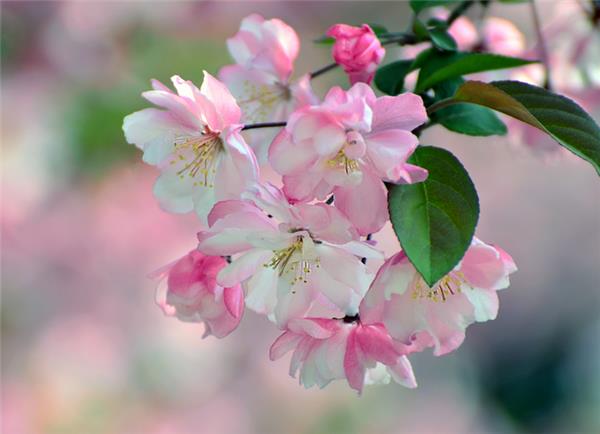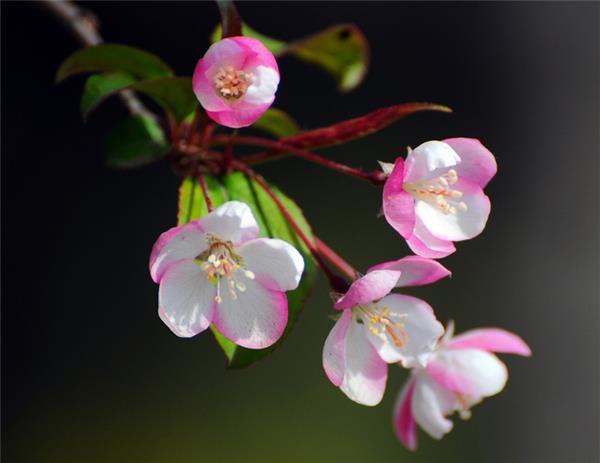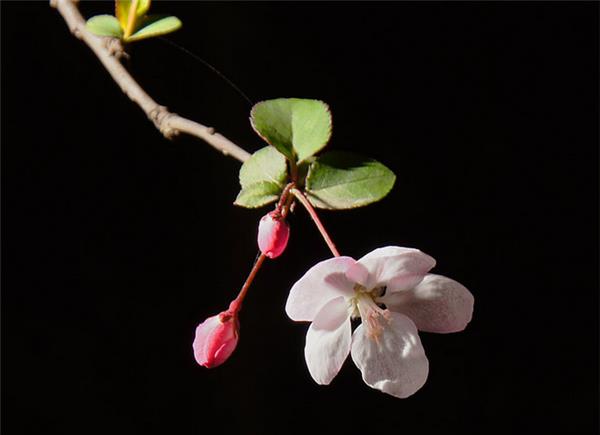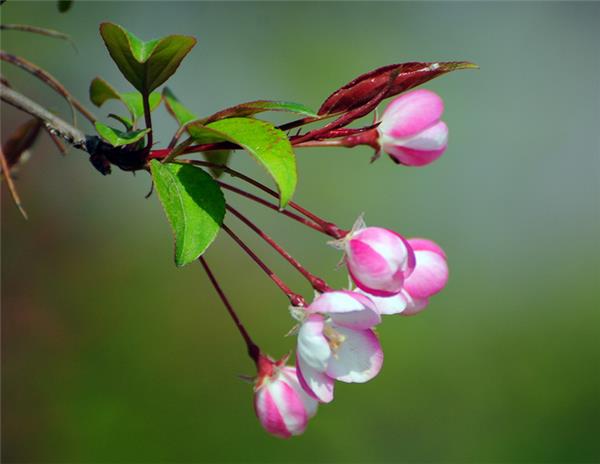How to Graft Begonia verticillata grafting method
The design and color of Begonia is delicate and colorful, which is very ornamental, so it is quite favored by people, so do you know the grafting method of Begonia?

Grafting method of Tripterygium
The grafting of begonia is based on the seedlings sown and propagated as rootstocks for branch grafting or bud grafting. The sap flowed and sprouted for branch grafting in spring and budded in autumn (from July to September). Branch grafting can be done by cutting, splitting and so on. The scion was selected from the fully developed 1-year-old branch, and its middle part (with more than 2 full buds) was taken. After grafting, the scion was covered with fine soil, and the "T" method was used for bud grafting.
1. Branch grafting of vertical silk begonia:
The grafting time is generally better when the terminal bud begins to sprout in early spring. The scion is an annual full branch left by pruning last autumn, cut into segments of 6 to 10 centimeters long, with at least two full buds on each segment. The cut is often sealed with paraffin in order to keep moisture. When grafting, use a cutter to cut the scion into two symmetrical slopes of different sizes, one 1.5 to 2.0 cm long and the other 0.8 to 1.0 cm long. The noodles must be flat, preferably cut with a knife. At the same time, cut the rootstock about 20 cm from the ground and cut a crack down on the north side of the cross section of the rootstock, with a depth of 2.0 to 2.4 cm. Then cut the long side of the scion inward and insert it into the cut of the rootstock. The cambium on one side of the rootstock must be aligned with the cambium on one side of the rootstock. If the thickness of the rootstock is similar to that of the scion, the cambium on both sides can be aligned better. Finally, tie it with plastic strips. For example, it is better to tie it to the graft with a small plastic bag to prevent moisture from evaporating.

2. Budding of Begonia verticillata:
The grafting time is about August in autumn. Select a suitable seedling to do the rootstock, the scion is begonia, should choose strong disease-free, full buds, upright upward growth of 1-year-old branches, with picking. Sticking bud grafting is a kind of grafting method which is not limited by season, easy to operate and high survival rate. Sticking bud grafting is similar to embedded bud grafting, but the bud grafting does not have xylem, so the contact surface between rootstock and cambium is larger, the healing is easier, and the survival rate is higher. Grafting is carried out in three steps:
Cutting rootstock: select the smooth part of the grafting part of the rootstock, first cut the lower part crosscutting, deep to the xylem, and then cut the xylem longitudinally from top to bottom at the top of the transverse incision 2.5cm, take off and peel.
Sprouting: the method of sprouting is the same as that of rootstocks, using the method of two knives. First, cut a knife across the lower 1cm of the bud, then cut down along the xylem at the upper 1cm of the bud, and cut the bud. The size of the bud slice is the same as the peeling size of the rootstock.
Lashing: attach the cut buds to the cutting part of the rootstock, and then bind them. It is best to bind with a soft and elastic plastic strip, so the sealing effect will be better. Grafting in early spring, because the scion does not have a petiole, when binding, the buds can be sealed together in a plastic strip. Growing season grafting, cutting buds to leave 1cm long petiole, binding the bud and petiole exposed to the outside.

Maintenance and management of Malus sinensis
The main results are as follows: (1) the cultivated soil can be mixed with 4 parts of garden soil, 1 part of organic fertilizer, 1 part of river sand and 4 parts of rotten leaf soil. In the growing season, the soil should be loosened once a month, which is beneficial to the root system of Malus sinensis to absorb nutrients.
(2) for the routine management of vertical begonia, it is suitable to live in an environment with sufficient light and air circulation. The suitable temperature for growth is between 15 and 28 ℃. The plant planted in the ground could withstand the low temperature of minus 150 ℃ in winter, and the pot plant could withstand the low temperature of minus 5 ℃. Pot plants should be properly shaded in summer and humidified and cooled by spraying water at the same time.
In general, in winter, there is no need to put the crabapple indoors, just bury the basin in the soil. There should be sufficient water supply in the growing season, and no stagnant water shall prevail. More water should be watered in spring and summer, and water should be watered once in the morning and evening during high temperature in summer; pay attention to drainage during plum rain and long rain to prevent stagnant water and rot roots in the basin; reduce watering in autumn to inhibit growth, which is conducive to overwintering.

(3) the potted plant applied thin cake fertilizer and water once a month in the growing season, and applied quick-acting phosphate fertilizer once when flower buds appeared; during flower bud differentiation, the potted plant applied 2-3 times of available phosphate fertilizer, such as 0.1% urea and 0.2% potassium dihydrogen phosphate mixture, which could promote the completion of flower bud differentiation of Tripterygium; stop topdressing after falling leaves in autumn and before sprouting in spring.
Pruning should be carried out after anthesis or dormant period, cut too long branches, promote the growth of lateral branches, increase the formation of flower buds and promote the plant to form a good plant shape. It is appropriate to turn the basin in early spring and late autumn, which can be combined with the arrangement of roots and pruning branches, and the rotten cake manure or barnyard manure can be placed at the bottom of the basin as the base fertilizer. Potted plants can make Begonia blossom ahead of time by heating measures in winter.
Stop dressing up.
Pruning should be carried out after anthesis or dormant period, cut too long branches, promote the growth of lateral branches, increase the formation of flower buds and promote the plant to form a good plant shape. It is appropriate to turn the basin in early spring and late autumn, which can be combined with the arrangement of roots and pruning branches, and the rotten cake manure or barnyard manure can be placed at the bottom of the basin as the base fertilizer. Potted plants can make Begonia blossom ahead of time by heating measures in winter.
Related
- Wuhan Hospital Iron Tree Blooming Result Was Instantly Frightened by the Gardener Master
- Which variety of camellia is the most fragrant and best? Which one do you like best?
- What is the small blue coat, the breeding methods and matters needing attention of the succulent plant
- Dormancy time and maintenance management of succulent plants during dormancy
- Minas succulent how to raise, Minas succulent plant pictures
- What are the varieties of winter succulent plants
- How to raise succulent plants in twelve rolls? let's take a look at some experience of breeding twelve rolls.
- Attention should be paid to water control for succulent plants during dormant period (winter and summer)
- Watering experience of twelve rolls of succulent plants
- Techniques for fertilizing succulent plants. An article will let you know how to fertilize succulent plants.



